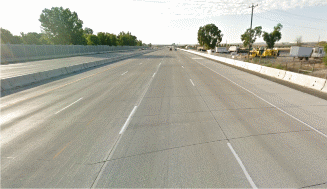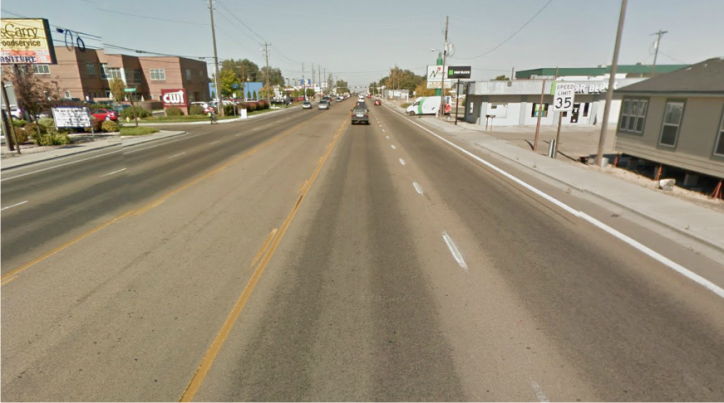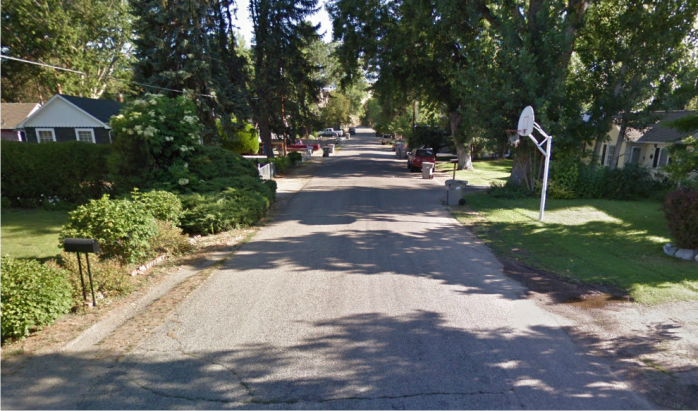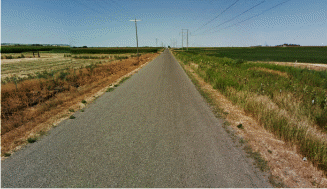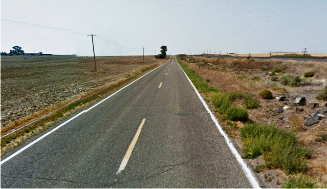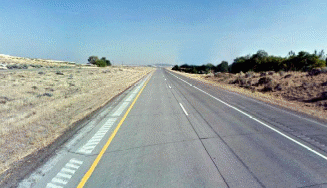Form NHTSA 1198 NHTSA 1198 The Idaho Driving Safety Survey
Matching Countermeasures to Driver Types and Speeding Behavior
Appendix C - Questionnaire - English
Matching Countermeasures to Driver Types and Speeding Behavior
OMB: 2127-0699
Appendix C: Questionnaire – English Version
Form: NHTSA 1198
OMB Control NO. XXXXXX
Expiration Date: XX/XX/XXXX
The Idaho
Driving Safety Survey
Conducted for
The National Highway Traffic Safety Administration
and the Idaho Transportation Department
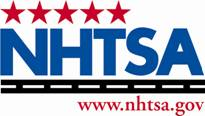
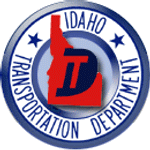
 The
Idaho Driving Safety Survey
The
Idaho Driving Safety Survey
Form: NHTSA 1198
OMB Control NO. XXXXXX
Expiration Date: XX/XX/XXXX

The National Highway Traffic Safety Administration (NHTSA) and the State of Idaho are inviting you to participate in a research survey about speeding and traffic safety conducted for NHTSA and the State by Battelle. This NHTSA survey aims to collect information on individual attitudes, beliefs, and habits associated with driver speeding behavior in Idaho.
If you choose to participate, you will be asked questions about your opinions on driving and driving safety, how you drive, and a few questions about things like age and gender for statistical purposes.
You are one of approximately 2100 randomly selected residents of Idaho who have been asked to participate in this survey. We need your response to help make this study representative of the diverse experiences of all drivers in the state. It will take about 20-30 minutes to complete, and you have received $5.00 in your survey packet to thank you for your time.
Battelle and NHTSA will have access to the survey data, but Battelle and NHTSA will never have access to your name, address or any other information that personally identifies you. The State of Idaho is mailing out the survey questionnaires, but they will never have access to your survey data.
It is also important that you know:
There are no right or wrong answers.
Your responses will be treated in a secure and confidential manner.
Survey reports will present all findings as a whole, so individual responses cannot be identified.
You might be uncomfortable answering some of these questions.
Your participation in this survey is voluntary. You may skip any questions that you do not want to answer or stop answering at any point.
If you have questions about the study please call our toll-free number 1-xxx-xxx-xxxx.
If you have questions about your rights as a research participant, please call the toll-free number, 1-877-810-9530, ext. 500.
This collection of information is voluntary and will be used to develop safety measures intended to reduce traffic crashes and fatalities. Public reporting burden is estimated to average 21 minutes per response, including the time for reviewing instructions searching existing data sources, gathering and maintaining the data needed, and completing and reviewing the collection of information. Please note that an agency may not conduct or sponsor, and a person is not required to respond to, a collection of information unless it displays a currently valid OMB control number. The OMB control number for this collection is 2127-XXXX (state OMB #). Send comments regarding this burden estimate or any other aspect of this collection of information, including suggestions for reducing this burden to: Information Collection Clearance Officer, National Highway Traffic Safety Administration, 1200 New Jersey Avenue, SE, Washington, DC 20590.
These questions will confirm whether you are eligible to complete the rest of this survey. |
Please check () the best answer and follow the instructions appropriate to your response. |
1. |
Are you the person this survey was addressed to? |
|
|
2. |
Are you willing to complete the survey? |
|
|
3. |
Do you drive as part of your job (not including your commute to and from work? |
|
|
|
|
|
|
SECTION A: Driving Related Attitudes, Beliefs, and Habits |
|||||||||
|
|||||||||
This section of the survey contains questions that will help us understand your attitudes, beliefs and habits associated with driving. Please write in or check () the best answer. |
|||||||||
|
|
|
|
||||||
Please indicate the extent that you agree or disagree with the following statements. |
|||||||||
|
Strongly Disagree |
Somewhat Disagree |
Neither |
Somewhat Agree |
Strongly Agree |
||||
|
|
|
|
|
|
|
|||
A1 |
Everyone should obey the speed limits because it’s the law. |
|
|
|
|
|
|||
A2 |
People should keep up with the flow of traffic. |
|
|
|
|
|
|||
A3 |
There is no excuse to exceed the speed limit. |
|
|
|
|
|
|||
A4 |
Driving over the speed limit is not dangerous for skilled drivers. |
|
|
|
|
|
|||
A5 |
I often get impatient with slower drivers. |
|
|
|
|
|
|||
A6 |
I enjoy the feeling of driving fast. |
|
|
|
|
|
|||
A7 |
I try to get where I am going as fast as I can. |
|
|
|
|
|
|||
A8 |
I feel annoyed about driving at or near the speed limit. |
|
|
|
|
|
|||
A9 |
Driving within or near the speed limit reduces my chances of an accident. |
|
|
|
|
|
|||
A10 |
Driving within or near the speed limit makes me feel relaxed. |
|
|
|
|
|
|||
A11 |
Driving within or near the speed limit makes me feel bored. |
|
|
|
|
|
|||
A12 |
Driving near the speed limit makes me feel more in control of my vehicle. |
|
|
|
|
|
|||
A13 |
Which of the following statements best describes your driving? Please select one response. |
|
|
|
|
|
|
A14 |
When driving I tend to… |
|
|
This section concerns how people may change the way they drive on different types of roads, such as multi-lane highways, rural routes, or residential streets. |
||||||||
|
Often |
Sometimes |
Rarely |
Never |
Don’t Know |
|||
A15 |
How often would you say you drive 15 miles an hour over the speed limit on multi-lane divided highways? |
|
|
|
|
|
||
A16 |
How often would you say you drive 15 miles an hour over the speed limit on multi-lane, interstate freeways through major towns or cities? |
|
|
|
|
|
||
A17 |
How often would you say you drive 15 miles an hour over the speed limit on two-lane highways, one lane in each direction in rural areas? |
|
|
|
|
|
||
A18 |
How often would you say you drive 10 miles an hour over the speed limit on rural country roads? |
|
|
|
|
|
||
A19 |
How often would you say you drive 10 miles an hour over the speed limit on neighborhood or residential streets? |
|
|
|
|
|
||
A20 |
How often would you say you drive 10 miles an hour over the speed limit on main roads in town that have two lanes in each direction? |
|
|
|
|
|
||
|
|
|
|
|||||
A21 |
How many times have you been stopped for speeding in the past twelve months?
|
|
Number of times__________________________
|
|||||
A22 |
How many times have you been cited/fined for speeding in the past twelve months? |
|
Number of times__________________________
|
|||||
A23 |
How many miles do you drive each week? Please include personal travel only, including your commute to and from work, but excluding any driving you do for work. |
|
|
|||||
A24 |
What percentage of the time do you drive (please make sure the total of A and B adds to 100 percent and include personal travel only, including your commute to and from work, but excluding any driving you do for work.):
|
|
||||||
|
|
|
___________ PERCENT |
|
||||
|
|
|
___________ PERCENT A+B = 100 TOTAL PERCENT
|
|
||||
A25 |
How often do you talk on the phone while you are driving? Would you say you talk on the phone while driving during… |
|
|
|||||
A26 |
Do you have a laser/radar detector in your car? |
|
|
|||||
Please answer the following questions thinking about the posted speed limit, plus or minus a few miles per hour. When driving in the near future, how likely/unlikely is it that you would drive within or near the speed limit under the following circumstances?
|
||||||
|
Very Unlikely |
Somewhat Unlikely |
Neither |
Somewhat Likely |
Very Likely |
|
A27 |
Driving in a fast/powerful car? |
|
|
|
|
|
A28 |
Driving when the speed limit is clearly signed? |
|
|
|
|
|
A29 |
Driving on long straight roads? |
|
|
|
|
|
A30 |
Driving in traffic calmed areas (e.g., with small roundabouts, speed bumps, special warning signs, etc)? |
|
|
|
|
|
A31 |
Driving when carrying passengers who want you to drive fast? |
|
|
|
|
|
A32 |
Driving through a school zone? |
|
|
|
|
|
A33 |
Driving with a child in the car? |
|
|
|
|
|
Based on what you remember about your own driving, how often would you say that you did the following activities? Your best guess is fine. |
|||||||||||||
|
Never |
Hardly Ever |
Occasionally |
Quite Often |
Frequently |
Nearly All the Time |
|||||||
A34 |
How often do you disregard the speed limits late at night or early in the morning? |
|
|
|
|
|
|
||||||
A35 |
How often do you get involved in “races” with other drivers on a roadway or from a stop light? |
|
|
|
|
|
|
||||||
A36 |
How often do you become impatient with a slow driver in the fast lane and pass on the right? |
|
|
|
|
|
|
||||||
A37 |
How often do you drive especially close to a car in front as a signal to the driver to go faster or get out of the way? |
|
|
|
|
|
|
||||||
A38 |
When attempting to turn onto a main road, how often do you pay such close attention to traffic on the road you are entering that you nearly hit the car in front of you that is also waiting to turn? |
|
|
|
|
|
|
||||||
A39 |
How often do you drive to reduce stress or tension? |
|
|
|
|
|
|
||||||
A40 |
How often do you take risks while driving because it’s fun, such as driving fast on curves or “getting air”? |
|
|
|
|
|
|
||||||
A41 |
How often do you drive more than 20 mph over the speed limit? |
|
|
|
|
|
|
||||||
A42 |
How often do you drive 10-20 mph over the speed limit? |
|
|
|
|
|
|
||||||
A43 |
How often do you wear a seat belt? |
|
|
|
|
|
|
||||||
A44 |
How often do you drive after consuming alcohol? |
|
|
|
|
|
|
||||||
|
|
|
|
|
|
|
|
||||||
A45 |
How much do you want to keep within or near the speed limit while driving in the near future? |
|
|
||||||||||
For the next six questions, please think about driving on a sunny day with no traffic ahead of you. At what speed would you typically be driving on the following types of roads:
|
|
|
|||||||||||
A46 |
Multi-Lane, divided Interstate freeway that passes through a major town or city, such as I-90 or I-84, with a 65 mph posted speed limit (as shown in the picture below): Speed ______________________________mph |
|
|
||||||||||
|
|
|
|
||||||||||
|
|
|
|
||||||||||
A47 |
Main (arterial) road with two travel lanes in each direction in a town with a 35 mph posted speed limit (as shown in the picture below): Speed ______________________________mph
|
|
|
||||||||||
|
|
|
|
||||||||||
A48 |
Neighborhood or residential road with a 20 mph posted speed limit (as shown in the picture below): Speed ______________________________mph |
|
|
||||||||||
|
|
|
|
||||||||||
A49 |
Paved rural country road with a 45 mph posted speed limit (as shown in the picture below): Speed ______________________________mph
|
|
|
A50 |
A low-traffic, rural State Highway with one travel lane in each direction with a 60 mph posted speed limit(as shown in the picture below): Speed ______________________________mph
|
|
|
|
|
|
|
|
A51 |
Divided Interstate Highway with two travel lanes in your direction (e.g., I-84 between Boise and Mountain Home) with a 75 mph posted speed limit(as shown in the picture below): Speed ______________________________mph
|
|
|
|
|
SECTION B: Attitudes and Beliefs about Speeding |
The following section is about conditions or factors that you consider when setting your driving speed. Please indicate the extent that you agree or disagree with the following statements.
|
||||||
|
Strongly Disagree |
Somewhat Disagree |
Neither |
Somewhat Agree |
Strongly Agree |
|
B1 |
Setting the cruise control within or near the speed limit can keep me from speeding. |
|
|
|
|
|
B2 |
A digital speedometer works better than the needle-style speedometer in indicating driving speed. |
|
|
|
|
|
B3 |
Radar speed signs that flash my speed when I pass them would make me more aware of my speed. |
|
|
|
|
|
B4 |
Posting the speed limit along roads more often would help me avoid speeding. |
|
|
|
|
|
B5 |
Knowing which roads have frequent speed enforcement keeps me from speeding on those roads. |
|
|
|
|
|
B6 |
Seeing a road sign showing where someone died in a speed-related crash would discourage me from speeding at that location. |
|
|
|
|
|
The following section concerns how effective you think higher penalties and increased enforcement would be for reducing speeding. Please indicate the extent that you agree or disagree with the following statements.
|
||||||
|
Strongly Disagree |
Somewhat Disagree |
Neither |
Somewhat Agree |
Strongly Agree |
|
B7 |
Habitual speeders should be fined a lot more each time they speed than other drivers who speed less often. |
|
|
|
|
|
B8 |
To reduce speeding, people should be aware of how much a ticket is. |
|
|
|
|
|
B9 |
Higher insurance rates as penalties for speeding are more effective in reducing speeding than increasing the fines for speeding. |
|
|
|
|
|
B10 |
For habitual speeders who almost always speed, increasing penalties does not have any effects on reducing their speeding behavior. |
|
|
|
|
|
B11 |
Providing incentives, such as free license renewal, rather than issuing penalties would be more effective in reducing speeding behavior. |
|
|
|
|
|
B12 |
Higher penalties could sometimes be unfair to some people (e.g., people with lower incomes). |
|
|
|
|
|
B13 |
Increasing police presence on the highway is effective in reducing speeding. |
|
|
|
|
|
The following questions are about how effective you think the following approaches would be for reducing speeding for the general public. Please indicate how much you agree or disagree with the following statements.
|
|||||||||||
|
Strongly Disagree |
Somewhat Disagree |
Neither |
Somewhat Agree |
Strongly Agree |
||||||
B14 |
Flashing speed displays would be the most effective when they are in locations with lots of hazards (e.g., pedestrians). |
|
|
|
|
|
|||||
B15 |
Rumble strips, grooved payment along the shoulders, are effective in slowing drivers down. |
|
|
|
|
|
|||||
B16 |
Speed bumps are effective in slowing drivers down. |
|
|
|
|
|
|||||
B17 |
A device in the engine that sets a maximum speed for the vehicle would be effective in reducing speeding in all situations. |
|
|
|
|
|
|||||
B18 |
A display on the dashboard that showed the posted speed limit would help reduce speeding. |
|
|
|
|
|
|||||
B19 |
A display on the dashboard that showed the vehicle’s fuel efficiency (FE) would encourage drivers not to speed. |
|
|
|
|
|
|||||
B20 |
A speed awareness course would be effective if it was offered when drivers are getting or renewing their driver’s license. |
|
|
|
|
|
|||||
B21 |
Education on stopping distance under different driving speeds is important. |
|
|
|
|
|
|||||
Please indicate to what extent the following statements are true or not true for you.
|
||||||
|
Not True at All |
Somewhat not True |
Neutral |
Somewhat True |
Completely True |
|
B22 |
I have never exceeded the speed limit. |
|
|
|
|
|
B23 |
I have never wanted to drive very fast. |
|
|
|
|
|
B24 |
I have never driven through a traffic light when it has just been turning red. |
|
|
|
|
|
B25 |
I always obey traffic rules, even if I am unlikely to get caught. |
|
|
|
|
|
B26 |
I always keep sufficient distance from the car in front of my car. |
|
|
|
|
|
B27 |
If there were no police controls, I would still obey speed limits. |
|
|
|
|
|
B28 |
I have never crossed a solid yellow line in the center of the road when passing another car. |
|
|
|
|
|
B29 |
I sometimes feel resentful when things don’t go my way in traffic. |
|
|
|
|
|
B30 |
I never regret my decisions in traffic. |
|
|
|
|
|
B31 |
I don’t care what other drivers think of me. |
|
|
|
|
|
B32 |
I always am sure how to act in traffic situations. |
|
|
|
|
|
B33 |
I always remain calm and rational in traffic. |
|
|
|
|
|
There are a number of existing methods and potential new technologies that could be used to reduce speeding. These next questions ask what you think about the use of these technologies to reduce speeding on American roads. |
|||||
|
Good Idea |
Neither |
Bad Idea |
Don’t Know |
|
B34 |
More frequent ticketing for speeding. |
|
|
|
|
B35 |
Issuing higher fines for speeding tickets. |
|
|
|
|
B36 |
A device in your vehicle that notifies you with a buzzer or a flashing light when you drive faster than the speed limit. |
|
|
|
|
B37 |
A device in your vehicle that records your speed data and gives you the option to provide the information to your insurance company to lower your premiums, if you obey the speed limits. |
|
|
|
|
B38 |
A device in your motor vehicle which slows the vehicle down when it senses another car or object is too close to your motor vehicle. |
|
|
|
|
B39 |
How important is it that something be done to reduce speeding by drivers? Is it … |
|
|
SECTION C: Driver Characteristics |
|
This section of the survey will gather information about general demographics that will be helpful for analysis purposes. Please write in or check () the best answer. |
C1 |
How old are you? |
|
Age__________________________ years
|
C2 |
Are you currently employed full time, part time, unemployed and looking for work, retired, going to school, a homemaker, or something else? Please check all that apply. |
|
|
|
|
|
|
C3 |
What is highest grade or year of regular school you have completed? |
|
|
|
|
|
|
C4 |
Are you currently married, divorced, separated, widowed, or single? |
|
|
|
|
|
|
C5 |
Do you consider yourself to be Hispanic or Latino? |
|
|
|
|
|
|
C6 |
Which of the following racial categories describes you? You may select more than one. |
|
|
C7 |
What is your gender? |
|
|
|
|
|
|
C8 |
How many persons live in your household? Please include all persons, including yourself, even those who are under the age of 16. |
|
Number of persons __________________________
|
|
|
|
|
C9 |
How many of those are under age 16? |
|
Number of persons __________________________
|
|
|
|
|
C10 |
Do you own or rent your home? |
|
|
|
|
|
|
C11 |
Which of the following categories best describes your total household income before taxes in 2012? Your best estimate is fine. |
|
|
|
|
|
|
C12 |
What is your zip code? |
|
Zip code __________________________
|
|
|
|
|
C13 |
Do you live in a rural, suburban, or urban area? |
|
|
|
|
|
|
|
|
|
|
|
|
|
|
|
|
|
|
|
|
|
|
|
|
|
|
|
|
|
|
C14 |
What do you think is the best way to reduce speeding on Idaho roads? |
||
|
|
|
|
|
|
|
|
|
|
|
|
|
|
|
|
|
|
|
|
|
|
|
|
|
|
|
|
C15 |
Do you have any other comments you’d like to make about driving safety or this survey? |
||
|
|
|
|
|
|
|
|
|
|
|
|
|
|
|
|
|
|
|
|
|
|
|
|
|
|
|
|
Thank you for your participation in this survey.
| File Type | application/vnd.openxmlformats-officedocument.wordprocessingml.document |
| File Title | Appendix C: Questionnaire – English Version |
| File Modified | 0000-00-00 |
| File Created | 2021-01-28 |
© 2025 OMB.report | Privacy Policy
